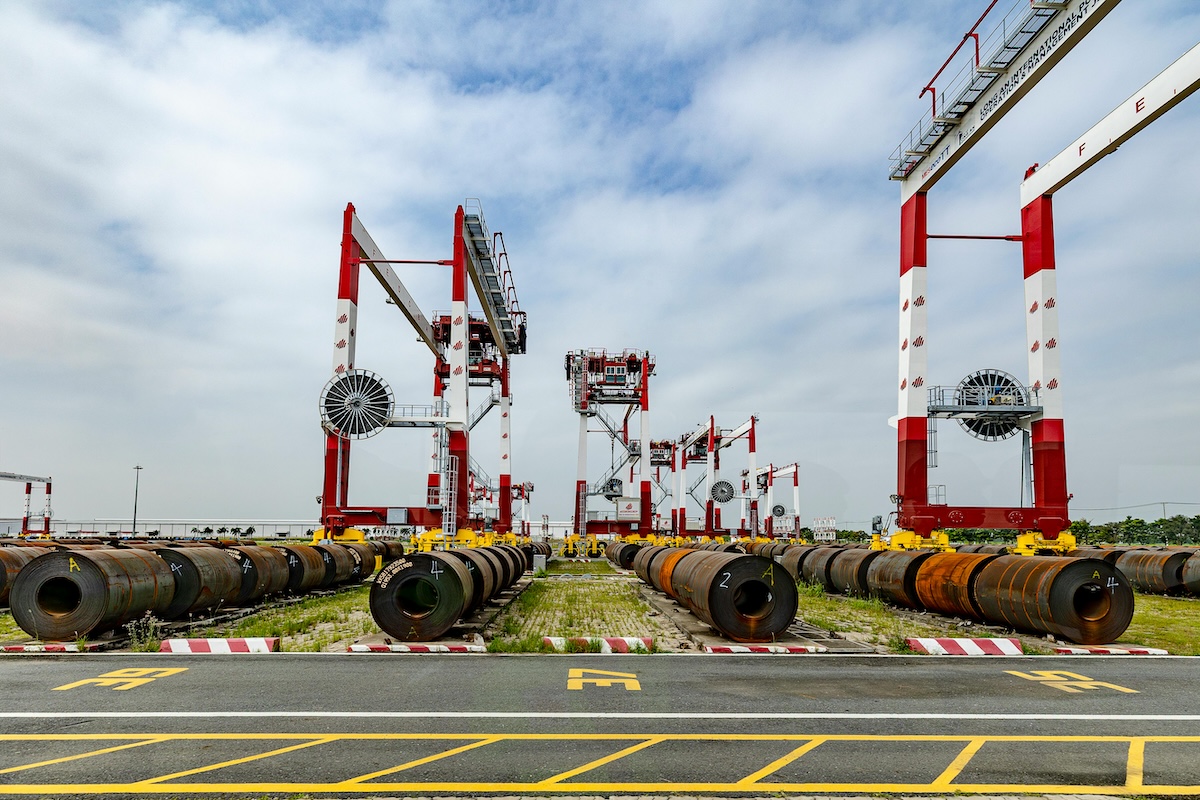FAQ: Compliance Policies & Procedures Manual

Article Summary
It is a document that outlines an organization’s rules, policies, and procedures to ensure export compliance with laws, regulations, and ethical standards.
An Export Compliance Manual helps organizations mitigate risks, ensure regulatory adherence, and promote ethical business practices.
Key components include policies, procedures, roles and responsibilities, training programs, and reporting mechanisms.
Typically, the Export Compliance Officer (ECO) or export compliance team is responsible for maintaining and updating the manual.
It should be reviewed and updated regularly, especially when regulations or business operations change.
Without a manual, organizations risk regulatory violations, financial penalties, reputational damage, and operational inefficiencies.
Why do I need Compliance Policies & Procedures?
If your company has licensable items (hardware, software, or “technology”), it is a best practice to establish an
export control compliance system. Failure to do so could lead to fines, damaging publicity, and the loss of exporting privileges. Your compliance system should address three major goals:
- Provide procedures to ensure that all compliance requirements are addressed.
- Provide training to ensure that the procedures are understood and performed correctly.
- Conduct regular assessments of procedures and overall system to gauge effectiveness.
What kind of documentation is required?
There should be written policies to address the various compliance requirements, complemented by templates and procedures as appropriate to ensure the accurate, efficient, and comprehensive completion of all necessary steps.
While some are general documents and some are location/ task specific, they should be bundled together in a Compliance Manual for several reasons:
- To serve as the absolute reference and repository for compliance guidance.
- To ease the processes of future updating and auditing.
- To facilitate the process of integrating with other company systems, as needed.
How do I develop and implement them?
It is important to address the issues methodically, developing policies and procedures (P&P) systematically for each requirement and in all departments. It is also important that these new (or updated) P&Ps work in conjunction with existing company guidance so as to avoid confusion, conflict, and inefficiency. As with all new procedures, compliance procedures should be developed, deployed, tested, and refined. Ideally, the stakeholders in each department will be involved in all these steps so as to harvest their experience and gather their “buy in.”
Can we develop these in-house or should we hire 3rd party experts?
While an in-house solution may look attractive on the surface, there are significant drawbacks:
- Internal POCs may be stretched already or ill-equipped for the task
- Internal experts are often the source of the problem
- Insiders are often overly aware of company dynamics and sometimes fearful of backlash
By contrast, outside experts (like CTP) have many advantages.
- We have extensive experience creating and customizing P&P manuals
- We have an enormous amount of tools, templates and guidance in our copyrighted Manual Maker, giving us
an enormous head start on all new P&P projects - We are well familiar with the USG requirement and will ensure that all needs are met

How Can CTP Help?
The backbone of the Export Compliance System is the Compliance Manual, where the policies provide the “What to do” and the procedures describe the “How to do it.” Properly done, this manual saves implementation time, prevents confusion amongst employees, and reduces the risk of violations. Distilling these policies and procedures is a critical but challenging task for companies. To help them, the CTP Compliance team has created its Customizable Compliance Manual with small to mid-sized companies in mind and an emphasis on specific criteria that are critical to success:
- Concise: We constructed the Compliance Manual to be comprehensive yet succinct. We kept it to 55 pages using hyperlinks within the document to provide a wealth of background material just a click away. These linked resources include CTP-provided templates, samples, and explanations, as well as government references and internal client sites.
- Customizable: The Manual is designed to be modified, with color-coded text to differentiate between removable instructions in red, customizable sections in blue, and permanent text in black. From the outset, CTP experts will consult with the client on a weekly basis, working section by section through the manual template to tailor the text and templates to satisfy the client’s specific requirements.
- Comprehensive: The Compliance Manual addresses export compliance issues involving the ITAR, EAR and OFAC regulations. Additional emphasis can be added as needed during the customization phase.
- Current: The recent changes introduced by Export Control Reform are reflected in templates and guidance provided in the Compliance Manual template.
- Cross-referenced: The respective sections of the Compliance Manual are cross-referenced to CTP’s suite of web- based training. CTP’s training portal offers 21 modules, which are organized in three categories to promote “as- needed” training. These essential topics are also covered in the CTP Internal Audit Tool. Viewed together, these three tools comprise a complete suite of compliance solutions offered by CTP.
Tailored Approach
Regardless of project size, we collaborate with your experts to determine the best approach for your company. Usually we work remotely, using email, secure transfers, and phone conferences, but we will come to your sites if needed, typically for audits. We adhere to schedules and have the depth of expertise to keep large projects moving. In all instances, we format our reports and deliverables to your exact preferences.
Easy Procurement / Ongoing Relationship
We start with a simple engagement letter, a Non-Disclosure Agreement, and a Time Account. We work by the hour, at highly competitive rates, so you pay only for those services that you utilize. After the initial task, most of our new clients retain us on a long term/ongoing basis. Even if you don’t use CTP for months, even years, the account is left open so your access to our experts is always just a phone call away. Working with CTP Compliance is like having adjunct staff in perpetual readiness at zero cost.
If you have any other topics or questions in mind, please visit www.ctp-inc.com or reach out directly to Rick Phipps at rphipps@ctp-inc.com.
Key Points
What is an Export Compliance Policies and Procedures Manual?
An Export Compliance Policies and Procedures Manual is a formal document that:
- Outlines an organization’s rules, policies, and procedures.
- Ensures adherence to laws, regulations, and ethical standards.
- Provides employees with clear guidance on compliance expectations.
It serves as a critical tool for managing regulatory risks and fostering a culture of accountability.
Why is an Export Compliance Manual important?
An Export Compliance Manual is essential because it:
- Mitigates risks: Helps organizations identify and address potential compliance issues before they escalate.
- Ensures regulatory adherence: Keeps the organization aligned with industry-specific laws and regulations.
- Promotes ethical practices: Encourages employees to act with integrity and accountability.
- Protects the organization: Reduces the likelihood of fines, penalties, and reputational damage.
What are the key components of an Export Compliance Manual?
A comprehensive Export Compliance Manual typically includes:
- Policies: Clear statements of the organization’s rules and expectations.
- Procedures: Step-by-step instructions for implementing policies.
- Roles and responsibilities: Defines who is accountable for compliance activities.
- Training programs: Ensures employees understand compliance requirements.
- Reporting mechanisms: Provides channels for reporting violations or concerns.
- Monitoring and auditing: Outlines processes for evaluating compliance effectiveness.
Who is responsible for maintaining the Export Compliance Manual?
The Export Compliance Officer (ECO) or compliance team is typically responsible for:
- Creating and maintaining the manual.
- Ensuring it reflects current laws, regulations, and organizational policies.
- Communicating updates to employees and stakeholders.
How often should an Export Compliance Manual be updated?
An Export Compliance Manual should be:
- Reviewed regularly: At least annually or semi-annually.
- Updated as needed: Whenever there are changes in regulations, business operations, or organizational structure.
- Communicated effectively: Employees should be informed of updates to ensure continued compliance.
What are the consequences of not having an Export Compliance Manual?
Organizations without an Export Compliance Manual face significant risks, including:
- Regulatory violations: Failure to comply with laws and regulations.
- Financial penalties: Fines and legal costs associated with non-compliance.
- Reputational damage: Loss of trust from customers, partners, and stakeholders.
- Operational inefficiencies: Lack of clear guidance can lead to inconsistent practices and errors.










